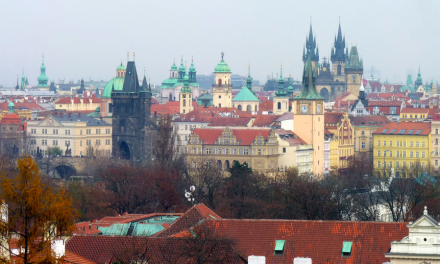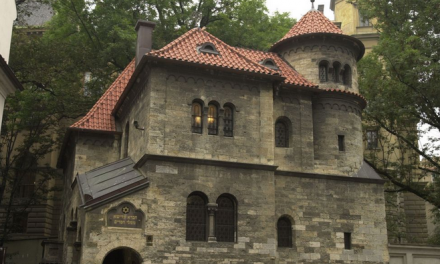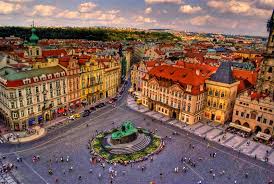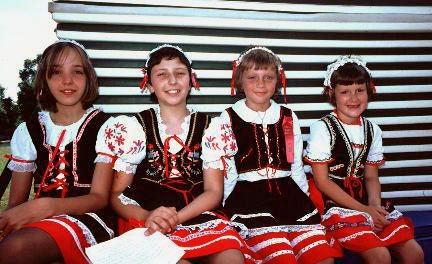When the fuel pump imploded on the Hlavkuv most, leaving me to ponder how this (relatively unknown) acquaintance might react to such news to the accompaniment of sickeningly deep bass issuing from the feeble disco opposite, I decided not ever to drive in this city again.
Far from limiting one, this arrangement opens up fantastic opportunities to interact with locals one might otherwise not encounter, and allows one to discover the lay of the land – all the hidden hot-spots, so to speak.
The following excursions can all be accomplished with a metro day pass and some change. I would recommend bringing along a bottle of water, a large backpack containing:
a map of Prague (a real map, not one of those cartoonish ones that only shows the streets with hostels on them), a book (I recommend Victor Pelevin’s The Yellow Arrow or the latter half of any of Paul Theroux’s books), a mobile phone, and some piskoty (I’ll explain.) For the sake of convenience , all voyages begin at Mustek – the one on the bottom of ‘Ventselast square’, or whatever.
Voyage 1, or “We’re off to see the Wizard”
Get on Line A and head to Dejvicka. The non-stop on Vitezne namesti is the perfect supply depot by the way, stocked as it is with three different kinds of cold beer, excellent potato pancakes and a healthy dose of “local color”. Head to the bus stop where you’d wait to go to the airport and locate bus 372. The terminal station is Okor. Board the bus and greet the driver.
The city quickly disappears behind as you enter the curiously named cleft of “Horni Sarka” (pronounced “horni Sarka “) and chug up the hill to Nebisice, home to the International School of Prague which, by the way, bears an uncanny resemblance to the CIA building in McClean, Virginia – the one no one can get through the gates of. Crane your neck to the right and catch a glimpse of the “suburb” set of Tim Burton’s Edward Scissorhands.
The bus, having gathered momentum after peaking the hill, descends through the serpentine of Nebusice proper at a blinding rate. Don’t bother stopping off here – it is populated exclusively by CSA mechanics and the lizard-aliens they are helping to smuggle from landing sites in the Caucuses. You finally escape the Vltava basin on the other side of town and speed off into fields sown with pantone red flowers. I swear are poppies.
The bus drops you in a premature fashion right in front of a picnic table perpetually occupied by Honza. Beer is cheap here, in every sense, but it has a certain charm on hot summer afternoons. The Piskoty are for Honzo’s dog, who will shred you to ribbons if he doesn’t receive his tithe.
After the libation of your choice (pivo nebo fernety…) stand in the center of the desolate intersection facing the direction the bus was heading. Take the road to your left, pass under a bridge and head off into the poppy fields. True to the Wizard of Oz meme the tower of a castle eventually appears.
Welcome to Okor.
Built to hide the riches of Prague during an enemy invasion, the castle at Okor was never discovered by any enemy, ostensibly due to lack of bus service.
Since abandoned to slow decay, the area hosts various music festivals over the course of the summer months and has become a new-age pilgrimage site, touted for its “energy-giving” field.
Everyone I ever saw on this field was asleep, which might account for a certain feeling of rejuvenation associated with the spot. The pub “At the Gate”, located accordingly, offers a fine fried cheese as well as generous salads and the usual array of svickova and pork.
One word of caution – do not attempt to climb the hill upon which the castle is built. It is deceptively steep and quite hazardous. My girlfriend laughed at me for twenty minutes as I tried to negotiate the descent, legs shaking like Michael Jackson at back-to-school night. Try to wrap up your excursion before 5:17, which is when the last bus leaves for Prague (You don’t need to walk all the way back to Honza’s table; the bus leaves from a cul-de-sac along the stream.)
Voyage 2, or “The Star Map”
Board the Yellow line train to Zlicin, like you’re going to Ikea, and get off at Smichovske nadrazi. Proceed to the left and exit the station as quickly as possible, both hands on your wallet, and find the bus stop. 246, 247, or 248 will all serve the purpose here.
If you have a mobile phone, be sure to switch to the most “musical” ringer tone and boost the volume as far as it is capable of being boosted. Now stow it in the bottom of your bag, ensuring that it will cycle through the ring at least five times before you can reach it.
This done, glance out the window to your left for a quick glimpse of the Branik pivovary and some notable cement “sculptures”. Quickly now, but with a suave aire of patient boredom, look to the right and peer up the valley to Barrandov.
A precipitous trail leads up into the Hollywood Hills of the Czech Republic. Construction of the film studio and Tennis club at Barrandov began during the First Republic and was primarily owned by one Vaclav Havel Senior. Unlike Universal Studios, where you must pay $400 and obtain a visa three months in advance, Barrandov is easily accessed by anyone speaking English.
After twisting through some San Francisco Bay-esque pseudo-modernist villas you’ll reach the stop “Filmove Ateliery”. This is yours.
Wave to the guard as you take your first steps toward simulated stardom. If he asks you where you’re going (a rare event) mumble something about Bruce Willis and check your mobile phone impatiently. He will back down.
There’s a map of the complex as you enter, but anything more than a quick glance could be misconstrued as evidence of your uselessness by the aforementioned guard. You are important – integral even. Stride confidently up the hill and make your first right.
Straight ahead you’ll see the old wooden soundstage. This is the building where most of the Czech classics were still-born – doomed to be stowed away in the vaults until the Russians left. Skrivanci na niti, Spalovac mrtvol and countless others. Yes, Closely Watched Trains too.
The building to the left is the new stage, where modern-day classics like The Monkey King have been shot. Watch for catering trucks. They come from Germany, packed full of green vegetable goodness and well-cooked pasta, and you too can stand in line. “Compars” is the key word here – no one knows who extras are.
Through the trees is an old building of dubious origins. It was used at one point to produce ammunition and still retains an ominous atmosphere. If there’s a production in town (which should be evident by the number of Americans walking around saying things like “Man, there was this waitress there, did you see her? I mean… “) head up the hill to the back lot. They build amazing sets here and, if you’re lucky, you can pop a tag up on one of the walls and it’ll show up in the next Bruce Willis film. No name, no fame.
That’s about it, unless you feel like wandering around handing out resumes, which is customary for most visitors. Head back to the bus stop and wave to the guard on the way out. Be sure to turn your mobile phone down.
That musical sh*t can be incredibly aggravating.





